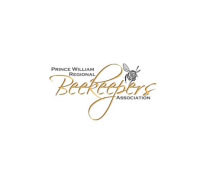
Virginia, United States (PRWEB) May 10, 2013
Prince William Regional Beekeepers Association (PWRBA) is accepting nominations for the position of Vice President. Preference is for nominees who have been beekeeper members for one year and voting for the new Vice President will take place at the May 14th meeting.
In their effort to support and promote bee keeping, sustainable agriculture, local, small and family owned farms and other local food sources, The Mohawk Valley Trading Company encourages families and people of all ages to attend and participate in beekeeping events and honey festivities.
Honey festivities and beekeeping events are fun, educational and a great activity for families and people of all ages, said Mary Ross of the Mohawk Valley Trading Company where they specialize in varietal raw honey.
Varietal honey is made primarily from the nectar of a particular type of blossom or flower. To capture the unique character and flavor of the blossom or flower, beekeepers must study botanical bloom and flowering patterns when planning hive placement which will determine the time of the harvest.
The main duties of the Vice President are to engage and communicate with committees, keep volunteer base alive and active, however the position is open to some degree, to interpretation and creative ideas. The Vice President is expected to attend Executive Board meetings which are generally 2 weeks before every club regular meeting.
The PWRBA constitution lists the Vice President duties as:
Section 2: The vice-president shall perform the duties of the president in his/her absence and shall discharge such other duties as may be directed by the president. The vice-president will preside over association committees and responsible for communications between the respective committees and the executive body.
About Honey Bees
Bees are insects that are related to wasps and ants and there are approximately 20,000 known species of bees found on every continent except Antarctica. Honeybees (Apis mellifera) are not native to the United States as they were introduced by Europeans to produce honey and beeswax. Honeybees are responsible for pollinating 80% of flowering crops, and without them the worlds food supply would be dramatically reduced.
As people become more conscious of the important role that honeybees play in their daily lives, beekeeping is becoming more mainstream and is now allowed in many urban and suburban municipalities. Since 2006, beekeepers in the North America and Europe have noticed a mystifying occurrence called Colony Collapse Disorder (CCD) in which worker bees from a beehive or European honey bee colony abruptly disappear, leaving the queen and insect larvae behind, unable to fend for themselves. While such disappearances have occurred throughout the history of apiculture, the term colony collapse disorder was first applied to a drastic rise in the number of disappearances of Western honey bee colonies in North America in late 2006.
In a 2013, a formal review by the European Food Safety Authority stated that recent studies show that neonicotinoid pesticides, some of the most widely used pesticides in the world, pose an unacceptably high risk to bees, and that the industry-sponsored science upon which regulatory agencies' claims of safety have relied is flawed and possibly deliberately deceptive.
Honey has been used by humans since ancient times for its health benefits and as a sweetener and flavoring for many foods and beverages, with tea being the most popular. Next to maple syrup, it is the most commonly used natural sweetener in North America.
Honey bees make honey by collecting nectar from flowers and regurgitating it into beeswax honeycombs inside their hive. Beeswax is a natural wax produced in the hive of honey bees of the genus Apis and its most popular uses are beeswax candles and as an ingredient in natural skin care products.
The flavor and color of honey is determined by the type of flower the bees gather the nectar from; therefore, when cooking or baking with honey it is a good idea to taste the honey before using it in a recipe. For example: a dark honey like tulip poplar-black locust honey will result in a strong, heavy, pungent flavor, whereas orange blossom honey will result in a delicate orange flavor. Dark-colored honey is considered to be higher in minerals and antioxidants than light-colored honey, and one of the most well-known dark-colored honeys is buckwheat honey. Raw buckwheat honey contains a higher amount of minerals and an antioxidant called polyphenol, which gives it its dark color. The health benefits of buckwheat honey are many and well known.
The rawest honey available is comb honey which is sections of the hexagonal-shaped beeswax cells of the honeycomb that contain raw honey that have been cut from the wooden frames of a beehive.
Using raw honey is a long-term investment strategy for optimal health and personal care; the dividends are overall mental, physical and spiritual well-being. Like a blue chip stock, raw honey should be included in any health-conscious consumers immune system boosting portfolio and the return on investment of substituting honey for refined sugar in the human diet is incalculable.
Another product made by honey bees and used by humans is bee propolis; a resinous substance that honey bees collect from tree buds and bark or other botanical sources and mix with beeswax, nectar and pollen. This mixture is used by bees to seal gaps in the hive and by humans for its health benefits and as a traditional, natural or homeopathic medicine.
For more information, contact Prince William Regional Beekeepers Association at PWRBeekeepers(at)gmail(dot)com.
No comments:
Post a Comment